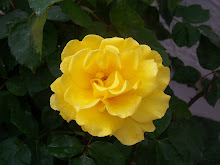Since the beginning of July, I have made approximately five batches of lye soap. Each batch weighed about five pounds. Only two of those batches did not require rebatching.
Rebatching is a process where the finished soap is melted down, ingredients are added, then the soap is remolded. Another term is "milling." Milled soap is rebatched soap. As far as I can tell, the difference is that consumers look for "milled" soap because it's perceived to be superior quality, and soap makers "rebatch" their soap in order to improve it.
There are plenty of soap makers who make soap with the intention of milling it. I believe that the reason that they don't just make the soap, mold it and be done with it is that certain ingredients can be affected in the soap making process. Certain essential oils and other ingredients may react to active lye. So, the soap is processed in order to give it desired qualities. That's why hand milled soap is more expensive - there is a lot more production cost involved. All mass-produced soaps are machine milled - even detergent bars, which aren't really soap at all. Machine milling involves compression with giant stainless steel rollers. The result is extra hardness and uniformity. However, the glycerin is processed out, and the soap loses it's character.
In my case, I didn't intend to need to rebatch. I was simply not satisfied with the way the soap turned out, with good reason. Either it didn't lather well enough, or had too much lye, or not enough scent. I need more practice to produce soaps with the properties that I want, and to produce those properties the first time, without rebatching. The good news is that the quality of my soap is continuously improving with each batch. I'm starting to settle on a blend of fats that produces a good lather. The right balance of lye is important too - too little and the soap is likely to go rancid, too much and it will take your skin off. Somewhere in the middle is a long lasting soap that moisturizes the skin. These first five batches have been well received by my family and friends. It will take a long time, however, to perfect the process.
I'm getting there.
I have a long list of soap projects I'd like to make - at the top of the list is a licorice soap with activated charcoal, (bad for washcloths but great for skin and fun for kids,) and a milk and honey soap with a blend of essential oils reputed to have skin enhancing properties. They will have to be hot-process soaps, meaning that I will cook them to speed the saponification process. This is because I am too impatient to wait months for the soap to finish curing and hardening. One day, I'll be able to make a batch of cold process soap and forget it for two months before testing it, but for now, it's hard to wait two or three days. I want to know how the last batch turned out before I make the next one, and I can't wait to make the next one.
I do acknowledge this - among soap makers, I am not considered an experienced soap maker. Not yet. More experienced soap makers may sneer when I say this, but I too am a soap maker. A person who has been making soap for five or more years might wonder how such a green newbie can know this. But I do know. I knew this the first time lye and lard turned into soap in front of my eyes. It just over three months ago, but this doesn't make it less true. When I slice into a loaf of freshly molded soap, I lovingly tend and turn those bars the way a chicken fusses over a clutch of eggs. This is not something I'm going to give up next month or next year. If I had known when I was twelve that I am a soap maker, I might have started then. Better late than never.
Wednesday, October 7, 2009
Subscribe to:
Posts (Atom)

